- Home
- Stephen Baxter
The Science of Avatar Page 4
The Science of Avatar Read online
Page 4
This isn’t fantasy. Schemes to exploit the NEOs are approaching the feasibility of business plans; hard-headed entrepreneurs are considering ways to reach these mines in the sky. And once we get there, resources and power are going to start flowing down from the sky to the Earth.
Perhaps this is how we will save the world from an Avatar-style ecocide. In Part One we looked at the bottleneck we face on Earth: a bottleneck caused by diminishing resources, and the diminishing capacity of Earth’s environment to withstand the disturbances we are causing to extract those resources. If population continues to grow—and, just as significantly, if we continue to aspire to a better standard of living for all of us—we’re going to need economic growth, which means a growth in the usage of resources. And maybe space resources, extracted without further impact to the Earth, could be a way through the bottleneck.
Maybe it doesn’t have to be the way Jake Sully bleakly summarised it to Eywa. Maybe there is a way for us to keep the Earth green, without giving up our civilisation and all the benefits it brings: by using the resources of space.
What if we keep expanding? Beyond the moon, beyond the NEOs, what riches lie waiting further out in the solar system?
Let’s follow the water. We need a lot of ingredients to live, but water is by far the most fundamental.
It turns out that the whole of the inner solar system out to Mars—planets, near-Earth asteroids and all—could supply only enough water for maybe fifty billion people. That’s a lot, but only six or seven times the number of people alive today—or, put another way, seven billion people consuming seven times as much resource each.
Happily there is a lot more water in the outer solar system. There are a vast number of asteroids in the main belt, orbiting between Mars and Jupiter, perhaps ten billion larger than a hundred metres in diameter, and a hundred billion between ten and a hundred metres across. They are rich in water, metals, phosphates, carbon, nitrogen, sulphur. The main-belt asteroids could contribute about half the water available on Earth, vastly expanding mankind’s opportunities for growth.
The main belt may not be the most interesting territory to prospect asteroids, however. The asteroids tend to occur in groups, shepherded by orbital resonances with the planets. Some of the most significant groups are known as the Trojan asteroids. These are not in the main belt but in Jupiter’s orbit, at the so-called Lagrange points, points of gravitational stability. As a result the Trojans are comparatively close together; by comparison, the main belt asteroids are spread over an orbit wider than that of Mars.
And the Trojan asteroids are rich. It is believed that the asteroid mass available in the Trojans is several times greater than that in the main belt itself. Not only that, they seem to be even more volatile-rich than the C-type asteroids and comet nuclei. Some analysts think the Trojans might prove to be the richest single resource pool in the solar system.
Beyond the asteroids, ambitious prospectors could settle on the moons of the outer planets, some of which are little more than giant balls of water-ice. A single ice moon has around forty times as much water as all Earth’s oceans. The last planet to be discovered, Pluto (though it’s no longer regarded as a planet at all) is believed to be but one of a whole cloud of similar objects, icy worldlets and massive comet nuclei, circling silently in the dark. The cloud may extend some hundred thousand times as far as Earth is from the sun—that’s halfway to Alpha Centauri. The cloud may have a mass as much as ten times all the planets in the solar system combined…
What a vision this is! Water is only one of the resources waiting for us out there. Imagine an interplanetary civilisation, the solar system transformed by baby RDAs into a savage competitive arena of giant mining vessels, plying the space lanes and dismantling moons—a sky full of Pandoras.
But you might hope that amid all this industry we will find it in us to preserve the natural wonders of the solar system. Including our very own Pandora.
7
THE WONDERS OF THE WORLDS
We’ve sent unmanned spacecraft to inspect all the planets of the solar system save distant Pluto, and have landed on several of them, including moons. And what we’ve found everywhere we’ve looked is wonderful—even if it’s not always what we expected (though that in itself is great news for a scientist).
Where might we go, not in search of resources, but for the sheer wonder of exploration?
Even the humble moon has its wonders. For example, at the moon’s north pole, at a crater called Peary, there are mountains where the sun never sets. These “Peaks of Eternal Light” are believed to be the only site in the solar system where this is true. It comes about because the moon’s axis isn’t tilted relative to the plane of its (and Earth’s) orbit around the sun, unlike Earth’s tilt, which is the cause of our seasons.
Mars may have no egg-laying princesses as in Burroughs’ books. But it is a small, strange world, very unlike the Earth, with volcanic mountains so tall they stick out of the atmosphere, and a canyon system that stretches around half the planet, and valleys that look as if they were carved by flowing water. Right now there are robots working up there, machines built by human hands rolling across the desiccated seabeds. And, we’re increasingly suspecting, maybe there’s life there after all. (In the Avatar universe there are human colonies on Mars.)
Venus is a world only a little smaller than Earth, but swathed in a monstrous ocean of atmosphere, almost all of it carbon dioxide, a bright layer that utterly blankets the ground from our view. It’s so hot down there that at night the ground glows in the dark. But, astonishingly, despite the (literally) infernal conditions, human craft have made it here too. The Soviets achieved a landing with Venera 7 in 1970, a spacecraft as tough as a miniature AMP suit. A very Russian achievement!
One of the general wonders of the age of planetary exploration is that the solar system is turning out to be full, if not of Earths, at least of abodes where some form of life is conceivable. Consider Jupiter’s second moon out. Europa is close enough to its parent for tides to have melted a deep layer of the moon’s water-ice mantle. Its cracked icy crust looks like nothing so much as ice floes on Earth’s frozen-over Arctic Ocean, beneath which is a sea, tremendously deep, perhaps reaching all the way to the moon’s rocky core. And hydrothermal vents on that black-as-night seabed could provide nutrients for some form of life. A world with a roof.
And, a little further out, is a mysterious world that may be the solar system’s greatest wonder of all.
The furthest any craft from Earth has landed, so far, is on Titan, sixth moon of the sixth planet Saturn, nearly ten times as far from the Earth as the sun. It was an astounding achievement.
And the world the Huygens probe found is the solar system’s own Pandora.
Titan, Saturn’s largest moon, was discovered by the Dutch astronomer Christianus Huygens in 1655. To him it was just a dot of light, glowing dull orange. But in 1944 Gerard Kuiper, another Dutch astronomer, discovered methane gas there. This was a moon with air! Titan turned out to have the most massive atmosphere of any rocky world after Venus. Bigger than our moon but only half the diameter of Earth, Titan is able to retain a fat layer of air because of its extreme cold.
Our first close-up views of Titan came in 1980 and 1981, when Voyagers 1 and 2 flew past Saturn. But Titan was just a ball of smog; we could see nothing of the surface. Then, in 2004, the Cassini spaceprobe arrived, with the Huygens lander, named for the pioneering astronomer, clinging to its side.
Titan really is like Pandora in many ways. Like Pandora it is a low-gravity moon of a giant planet, and, superficially, remarkably Earthlike. Huygens came down on what looked like a relic of a flash flood, a plain littered by worn pebbles. On Titan there are mists and clouds, and slow-falling rain; there are branching river valleys that lead to oceans crossed by waves hundreds of metres tall. One ocean, called the Kraken Mare, is as big as the Caspian Sea.
But Titan is an Earth reimagined in different materials. On Titan water-ice plays th
e role silicate rock does on Earth, and methane plays the part of liquid water. Those pebbles Huygens saw were ice, not rock. The methane cycle isn’t quite like Earth’s water cycle, so the weather isn’t the same; evaporation is slow, but the air can hold a lot of vapour. The result is long periods of drought punctuated by intense rainstorms. There could even be “cryovolcanoes,” volcanoes spewing liquid water; there is evidence of lava flows in the past. If you stood on Titan you would be a monster of molten lava!
And, like Pandora, Titan is full of opportunities for life.
Out of those layers of clouds, complex organic molecules—the stuff of life itself—continually drift down to the surface below. They are created by electrical storms in the atmosphere, and the reaction of sunlight and Saturn’s magnetism with the upper air. These organic molecules could be the basis of an Earthlike life: carbon-water life, maybe anaerobic (that is, oxygen-hating) methane-eating bugs.
But there could be other kinds of life. Maybe a more exotic sort of carbon-based life form, using ammonia as its solvent rather than water and a metabolism based on carbon-nitrogen bonds, could be found in the stuff bubbling out of the cryovolcanoes. This is the sort of life that might live in the oceans of “roof worlds” like Europa. Most exotic of all could be a community of slime-like organisms that use silicon compounds as their basic building blocks, not carbon as we use; they might live in the surface ethane lakes, so cold they favour the long but fragile silicon-silicon molecular chains on which this form of life depends. Such forms might also find a home on Triton, the even colder moon of Neptune, where there are lakes of liquid nitrogen.
Nowadays we envisage many kinds of life, and many diverse habitats in the solar system. But Titan is extraordinary, for it may be a junction for life forms related to types from deep within the solar system’s warm heart, and from its chill edge. Huygens only glimpsed this; we must go again.
But Titan, like the other bodies of the solar system, might have a value beyond science—and that’s what might put it at risk. Titan is a natural organic-synthesis machine, way off in the outer system. It could become a factory for future colonists, churning out fibres, plastics, even synthetic food, manufactured from carbon, hydrogen, oxygen, nitrogen. Further out in time, it may be possible to export Titan’s volatiles to inner planets lacking them; Titan nitrogen, taken away on a massive scale, could be used to terraform Mars, to make it like the Earth. Just as some once hoped the moon could be a stepping stone to the planets, so Titan, a vital resource pool on the fringe of interstellar space, may some day be a key refuelling dump for ships like Venture Star, on their way to the stars.
But surely the worlds of the solar system are more than just mines in the sky. There are already proposals to preserve the unique value of other worlds. Radio astronomer Claudio Maccone of Turin advocates a “protected antipodal circle” of radio silence covering the moon’s far side. This is the only place in the solar system permanently shadowed from Earth’s clamorous broadcasts and so ideal for radio astronomy, and worth preserving as a park of silence.
Certainly, I personally hope that by the time we get to Titan we will treat it with more respect than RDA treats Pandora.
So we have reached the effective edge of the solar system, and there have been wonders aplenty—but no true Pandora, nothing like Earth. To find life like ours we will have to go on beyond the sun’s family.
But how are we going to get there? Could we ever build a ship capable of reaching the stars? Will a Venture Star ever fly?
PART THREE
VENTURE STAR
“Are we there?”
—Jake Sully
8
A SHIP TO SAIL
The Interstellar Vehicle Venture Star is a starbound freighter, one of a fleet of twelve sister ships regularly plying the route between Earth and Pandora. The frequency of the voyages is why Colonel Quaritch is able to offer Jake a ride home only a few weeks after his arrival. Typically the ship will carry two hundred sleepers like Jake out to Alpha Centauri, and hundreds of tonnes of unobtanium back to Earth. In addition to a fifteen-strong crew there are also ten medical personnel on board, woken at the end of the journey to supervise the waking of the cryosleepers.
If you have your Avatar DVD to hand, take a look at the early scenes featuring Venture Star, as we see it in orbit around Pandora. It certainly looks an impressive piece of engineering, and so it should. James Cameron wrote a “bible,” a ten-page briefing document, detailing how the ship works, drawing on our best understanding today of how to build a starship. (There have been more starship studies than you might think; I’m personally involved in a study called Project Icarus, about how to send an unmanned probe to a nearby star.)
At the rear of the ship is an engine stack. The ship’s main drive is a rocket powered by the annihilation of matter and antimatter—in fact hydrogen and antihydrogen, contained in those big spheres, cryogenically cooled and held safely in magnetic bottles. As we’ll see the rocket engine is only used at the Pandora end of the journey. The engine stack is at the end of a long strut that leads to the crew compartments, which include a rotating arm. These components in turn huddle behind an array of forward-facing shields.
That ship is big, no less that fifteen hundred metres long. One reason for its sheer size is the need to keep the crew separated from the hazardous radiations of the engine. We have no spacecraft of anything like that dimension. Our largest space artefact is the International Space Station (ISS), which is seventy-three metres long and a hundred metres wide, including the solar panels, and masses over three hundred tonnes—a total mass which is in fact less than Venture Star’s cargo capacity.
How does such a ship fly to the stars?
Venture Star undergoes short bursts of acceleration at the beginning and end of the voyage, and then spends most of its transit coasting, with the engines powered down. You can tell it must cruise because you can see that rotating arm turning around the ship’s spine, evidently a device to give the handful of alert crew artificial gravity. This makes engineering sense; Apollo cruised most of the way to the moon and back, with most of the fuel load of its huge Saturn V booster burned up in the first few minutes of the journey. During the boost phases, the fragile rotating arm is folded back against the ship’s spine.
When Venture Star is accelerating from the solar system, it doesn’t rely on its own engines at all. Instead it is pushed by beamed power from Earth, light from a tremendous laser that is caught by a huge sail, a bowl sixteen kilometres across held stable by rotation. The ship carries big mirror shields that in this phase of the voyage protect the habitable compartments from the laser beam’s intense glare. When the acceleration phase is over the sail is folded away. All this is done to minimise the mass of fuel Venture Star must carry.
The “lightsail” is in fact an interstellar propulsion technology whose underlying principles were, remarkably, defined and demonstrated by the end of the nineteenth century, with a theoretical prediction of the pressure exerted by light by the Scottish physicist James Robert Maxwell, followed by an experimental demonstration by a Russian scientist called Peter Lebedev in 1900. Later the American physicist and science fiction writer Robert L. Forward did much to develop the idea. In his novel Rocheworld Forward described a manned starship propelled by the collected light of a thousand laser stations in orbit around planet Mercury. But the basic idea is more elegant, even beautiful; if you didn’t mind a journey time of a few thousand years you could sail to the stars powered by sunlight alone, pushing a huge, filmy sail.
Pushed by the energy beam, Venture Star accelerates at an uncomfortable (for the awake crew) one and a half gravities for a hundred and sixty-eight days. Then it cruises. Jake Sully, having slept away the journey to Alpha Centauri in cryosleep, is told on waking that the journey took five years, nine months and twenty-two days. That’s certainly a long enough time to justify putting most of the passengers in the freezer rather than try to keep them fed, watered and occupied all that way; an
active human consumes around two tonnes per year of oxygen, water and food.
But it’s still a pretty rapid crossing. According to my venerable Norton’s Star Atlas, Alpha Centauri is 4.39 light years from the sun. Despite a perhaps confusing name, a “light year” is a unit of distance, not time; it’s the distance a light beam travels in a year, around nine trillion kilometres, or about sixty thousand times the distance between Earth and sun. So it would take a beam of light four years, four months and around nineteen days to reach Alpha Centauri. Any estimate of the ship’s precise speed depends on whether Jake’s five years, nine months and twenty-two days is measured on Earth or aboard the ship—as we’ll see, there is a difference! But you can see immediately that to cross more than four light years in less than six years Venture Star must have been travelling at a respectable fraction of the speed of light. In fact, the cruise speed is seventy per cent of lightspeed, and the ship travels at this speed for five years ten months.
Such a high velocity immediately raises another hazard: interstellar debris. Space isn’t empty, not even between the stars. Out there between the sun and Alpha Centauri the average density of matter is around one hydrogen atom per cubic centimetre. That may not sound a lot, and in the four-light-year-long tunnel bored by Venture Star the ship will only encounter a gram or so of material. But a gram hitting you at seventy per cent lightspeed would be equivalent to the three hundred tonnes of the International Space Station hitting you at Earth-orbital speeds—whammo! So after launch the ship is turned head over heels, so that during the cruise those mirror shields that protected the crew from the laser beam are held ahead of the craft, to act as multi-layer protection against the debris.

 The Martian in the Wood
The Martian in the Wood THE H-BOMB GIRL
THE H-BOMB GIRL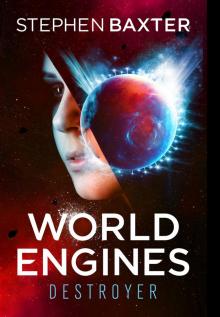 World Engine
World Engine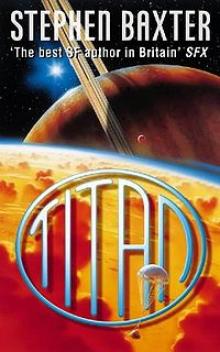 Titan n-2
Titan n-2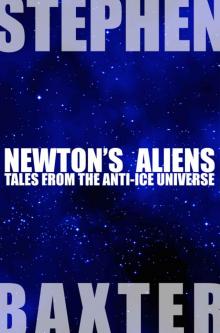 Newton's Aliens: Tales From the Anti-Ice Universe
Newton's Aliens: Tales From the Anti-Ice Universe Exultant
Exultant Manifold: Origin
Manifold: Origin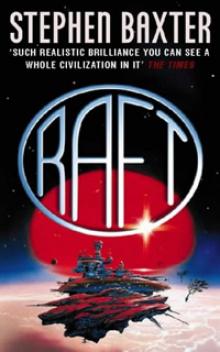 Raft xs-1
Raft xs-1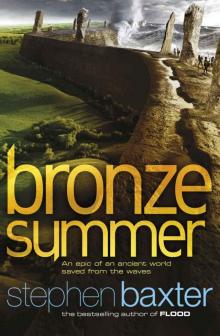 Bronze Summer n-2
Bronze Summer n-2 Transcendent
Transcendent Stone Spring
Stone Spring Coalescent
Coalescent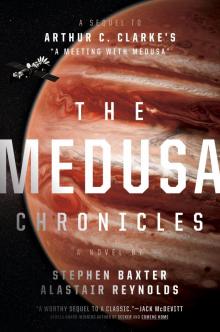 The Medusa Chronicles
The Medusa Chronicles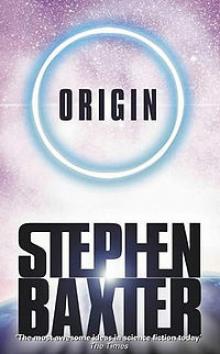 Origin m-3
Origin m-3 Silverhair tm-1
Silverhair tm-1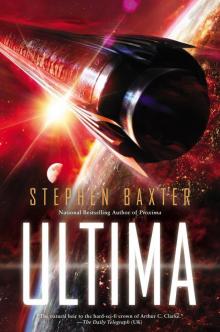 Ultima
Ultima Voyage n-1
Voyage n-1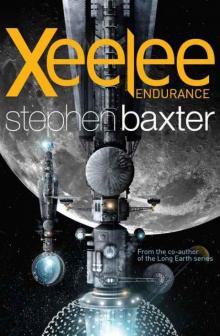 Xeelee: Endurance
Xeelee: Endurance Space m-2
Space m-2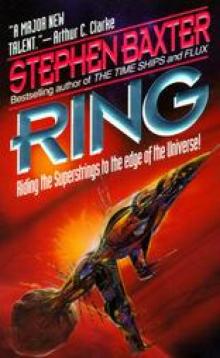 Ring xs-4
Ring xs-4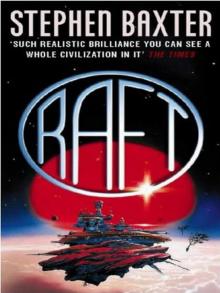 Raft
Raft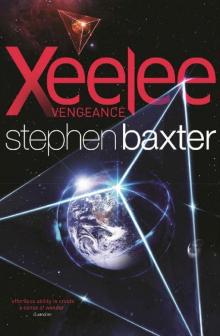 Xeelee: Vengeance
Xeelee: Vengeance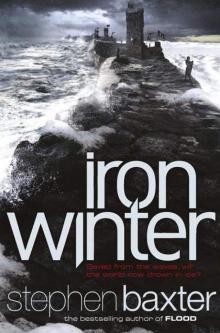 Iron Winter n-3
Iron Winter n-3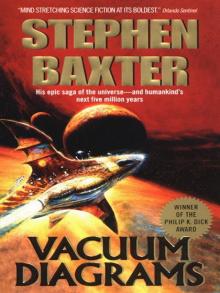 Vacuum Diagrams
Vacuum Diagrams Longtusk tm-2
Longtusk tm-2 Proxima
Proxima Evolution
Evolution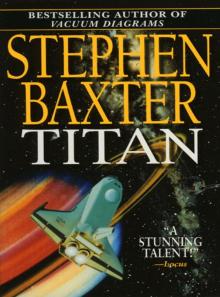 Titan
Titan Last and First Contacts (Imaginings)
Last and First Contacts (Imaginings) Emperor
Emperor The Massacre of Mankind
The Massacre of Mankind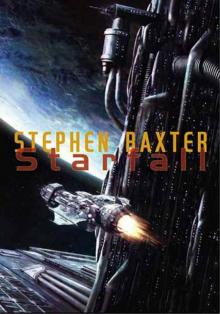 Starfall
Starfall Doctor Who - The Wheel of Ice
Doctor Who - The Wheel of Ice Longtusk
Longtusk Silverhair
Silverhair Conqueror tt-2
Conqueror tt-2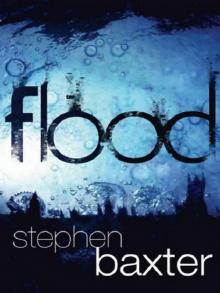 Flood
Flood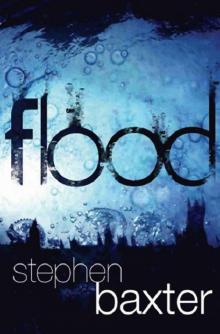 Flood f-1
Flood f-1 Emperor tt-1
Emperor tt-1 Moonseed
Moonseed Conqueror
Conqueror Timelike Infinity xs-2
Timelike Infinity xs-2 The Ghost Pit
The Ghost Pit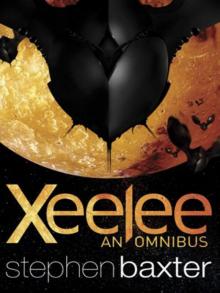 Xeelee: An Omnibus: Raft, Timelike Infinity, Flux, Ring
Xeelee: An Omnibus: Raft, Timelike Infinity, Flux, Ring Weaver tt-4
Weaver tt-4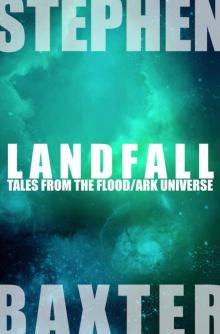 Landfall: Tales From the Flood/Ark Universe
Landfall: Tales From the Flood/Ark Universe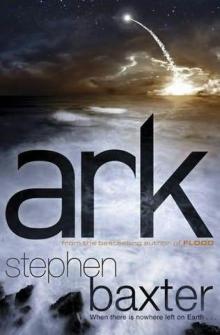 Ark
Ark Emperor: Time’s Tapestry Book One
Emperor: Time’s Tapestry Book One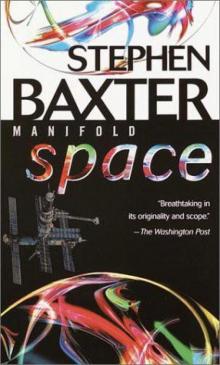 Space
Space Icebones
Icebones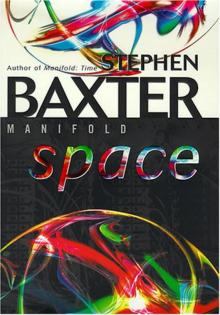 Manifold: Space
Manifold: Space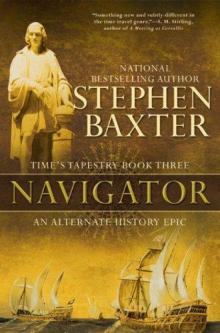 Navigator
Navigator Obelisk
Obelisk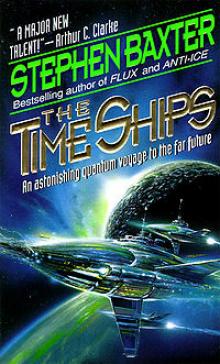 The Time Ships
The Time Ships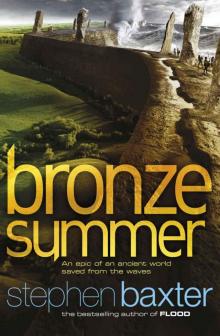 Bronze Summer
Bronze Summer Resplendent
Resplendent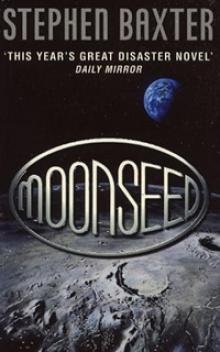 Moonseed n-3
Moonseed n-3 Flux xs-3
Flux xs-3 Transcendent dc-3
Transcendent dc-3 Icebones tm-3
Icebones tm-3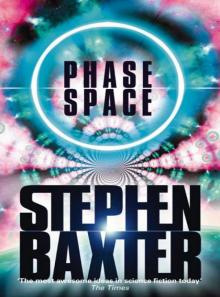 Phase Space
Phase Space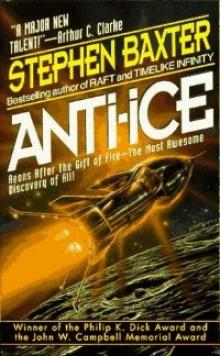 Anti-Ice
Anti-Ice Weaver
Weaver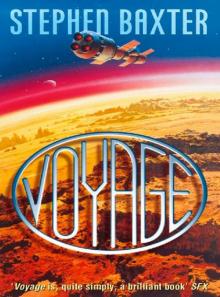 Voyage
Voyage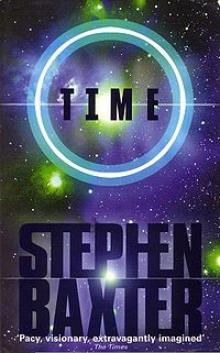 Time m-1
Time m-1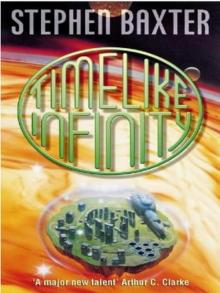 Timelike Infinity
Timelike Infinity Exultant dc-2
Exultant dc-2 Coalescent dc-1
Coalescent dc-1 Navigator tt-3
Navigator tt-3